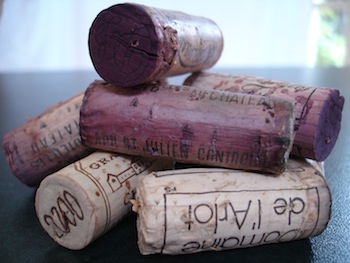Screwcap - Cork's Saviour?

The cork industry should welcome the Stelvin screwcap closure as a saviour, not a villain. A bold statement, yes, but picture this: when Food & Wine came on the scene 15 years ago cork ruled the roost; never was a screwcap seen in any of our tastings. But it was a despotic rule, based on centuries of tradition and associated mumbo jumbo and its regular failings in the form of cork taint and random oxidation were accepted, by otherwise harsh critics, with a resigned shrug. It seemed that nothing could or would be done to tackle the problem. It was just a chance you had to take.
Then, in 2000, a group of 15 producers in Australia’s Clare Valley joined forces and took the decision to adopt the screwcap as their favoured closure. What makes perfect sense in hindsight was a brave move at the time and it only worked because they acted together. The gauntlet had been thrown down to the cork industry.
It was an industry – if it could even be called that – rooted in the 19th century. Things were done the way they were done because that's the way they had always been done. With no serious alternative, cork had the market to itself and, despite rigorous efforts by conscientious winemakers to ensure that they were using the best quality corks, some rogues always slipped through the net.
For years, cork-induced wine faults constituted the elephant in the room that nobody wanted to challenge, despite the fact that sticking a piece of tree bark into the neck of a bottle was almost guaranteed to lead to a spoilage rate of about five per cent. That's one dud in 20. And if that bottle is a magnum of 1982 Château Margaux, as happened at a wine dinner I attended some years back, then the ‘romance of the cork’ dies very quickly indeed. On that day a shrug of the shoulders was not enough to dispel the disappointment as the wine was taken away to its appointment with the drain.
As the screwcap challenge gained momentum in the early years of this century the cork industry reacted with comical, spoilt brat truculence, whinging and whining and marshalling all sorts of red herring arguments about saving an indigenous industry and even the environment, which is always good for tugging the heart strings.
This has continued ever since, with the screwcap being cast as the villain when it should be thanked profusely for dragging the cork industry, kicking and screaming, out of the 19th century and into the 21st. Without the screwcap challenge things would have remained as they were and may even have got worse, as increased demand for corks precipitated a further decline in quality.
Thankfully the cork industry’s whining was matched by a more mature response whose mantra was modernisation. Research and quality control are now integral parts of the industry and, as noted in our monthly tastings here at Food & Wine, the incidence of cork taint has declined. Admittedly, this is not as rigorous a sampling as professional statisticians would require but it can nevertheless be taken as an indication of a move in the right direction. What the future holds is anybody’s guess but one thing is certain: screwcaps – the saviour of the cork industry – are here to stay.
VINOLOK
Perhaps the most elegant alternative to the cork closure is the Vinolok, a glass stopper with a clear plastic ring of ‘Elvax’ that forms the seal. Until opened the stopper is held in place by a twist-off metal cap and thereafter the bottle can be easily re-sealed by simply snapping the stopper back into position. Given that glass vessels have been used to store wine for three centuries without any known problems, the potential for spoilage is likely to be non-existent. One advantage the Vinolok shares with Stelvin is that bottles no longer need to be stored on their side – leading to a complete re-design of wine cellars perhaps?
A TELLING TASTING
Am I totally opposed to cork closures? No, not at all. When they function properly they are excellent, a fact I have always acknowledged but which was brought home to me most tellingly in one of the great strongholds of screwcap – the Clare Valley. Visiting Taylors/Wakefield a couple of years ago I was treated to a comparative tasting between bottles of the same wine, some sealed with cork and some with screwcap. In each case a cork-sealed wine proved to be best but – and this is the critical point – two, and sometimes three, such bottles had to be opened before the screwcapped bottle was bested. Decide what you prefer. Do you want the guaranteed consistency of the screwcap or the potential excellence, and concomitant risk of spoilage, of cork?
Article originally published in Food & Wine Magazine, September 2012.
blog comments powered by Disqus

